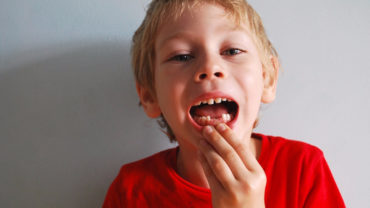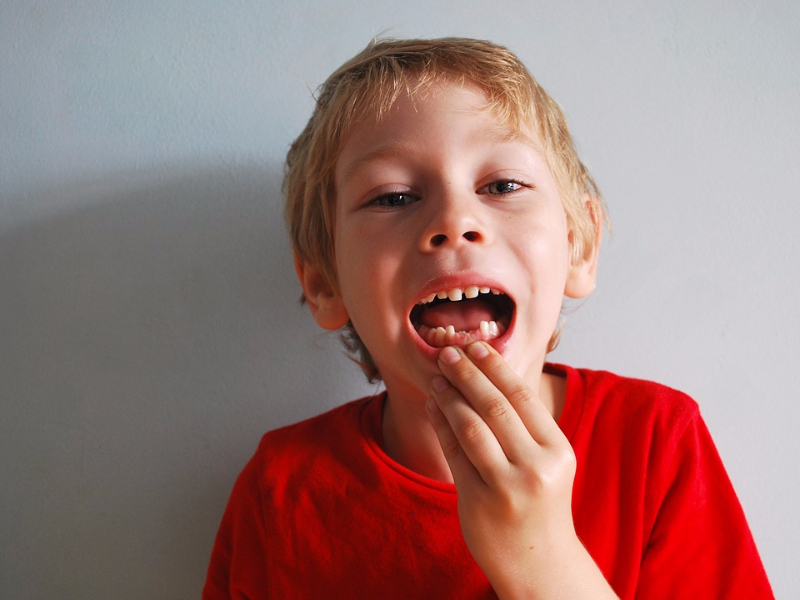Via Punch: Simple ways to prevent cavities in children
If proper care is not taken, babies can develop cavities which are a chronic disease ten times more common than asthma in children. Baby teeth can get cavities which will transform into a dental infection. The tooth decay is a serious, infectious and transmittable disease which can spread quickly without proper precautions taken.
A cavity develops when a tooth decays and if left untreated, it can destroy the tooth and kill nerves at the centre. The hole grows bigger and deeper over time and they can also be called dental caries.
People often think that a baby’s teeth don’t need too much attention because, eventually they will all fall out as they grow older. But the truth is our baby’s teeth matter even more as infants because, primarily the teeth are very important to a child’s physical, emotional and social development.
You should note that the teeth aid in speech development, they build self-esteem by providing a beautiful smile, they also enable a child to pay full attention while learning in school without the distraction of dental pain and also, they save space in the jaw that is needed for proper development of permanent teeth.
However, a research shows that early childhood cavities can be prevented using some simple and DIY tips.
But before the simple tips are carried out in preventing cavities in children, mothers especially pregnant women should make sure their own mouths are healthy by getting a professional dental examination. Also, they should practise good daily oral hygiene and care. A study shows that this reduces transmission of cavity germs from mothers to infants.
Bottle hygiene
The baby’s bottle gives toddlers a great comfort but when you misuse them, it can cause tooth decays and other dental problems. It is very important that the baby’s bottle is hygienic at all time. Always use breast milk, water or formula in baby’s bottle and not juice, soda or any other forms of sweetened drinks as this is the very first step to preventing cavities in children. Also, do not put your infants to bed with a bottle unless it contains diluted water. A study shows that it is advisable to wait till the baby is about 12 months before you start giving them juice and then gradually limiting it to meal and snack times. Do not rush your baby to consuming solid meals.
Pacifier hygiene
If your child uses a pacifier, ensure that it is properly taken care of. Do not dip it into anything sweet like sugar and honey as this can cause cavities in your baby’s teeth. When the pacifier falls to the ground, do not attempt cleaning it with your mouth as cavity-causing germs can be transmitted to the child without you knowing. Also, always clean with hot water and if you decide to wash with soap, make sure you rinse thoroughly before returning it back into the baby’s mouth.
Limit the sugar intake
A study shows that it is advisable to introduce healthy eating to our babies. Always ensure to provide healthy snacks like meat, milk, butter, fruits and vegetables for them at all times. Also, learn to limit the sugar intake in quantity and frequency. Sugar gives bacteria the food it needs to thrive and create cavities in the tooth. Before the teeth begin to grow, gently wipe gums and inside of the mouth every day especially after feedings and before bed, with a clean, warm cloth.
Detect early cavities
It is better to detect early cavities in your baby’s teeth. Tooth decay is very painful and when it starts, it can affect the overall development of the child. Detecting early cavities is the best way to handle cavities. Plan a checkup routine to keep your child on top of oral health. Ensure that your child brush and floss by doing it with them. It is a fun way to guide them into a healthy brushing routine. This process gives you the opportunity to monitor their progress and brush time.
Keep to appointment
Establish the habit of keeping to dental appointment. An American study shows that the child’s first dental visit should be scheduled around his or her first birthday. Visit a dentist at least every six months interval for proper cleaning and checkup. This process allows you know when you have a cavity and how to prevent it from becoming a big problem.





